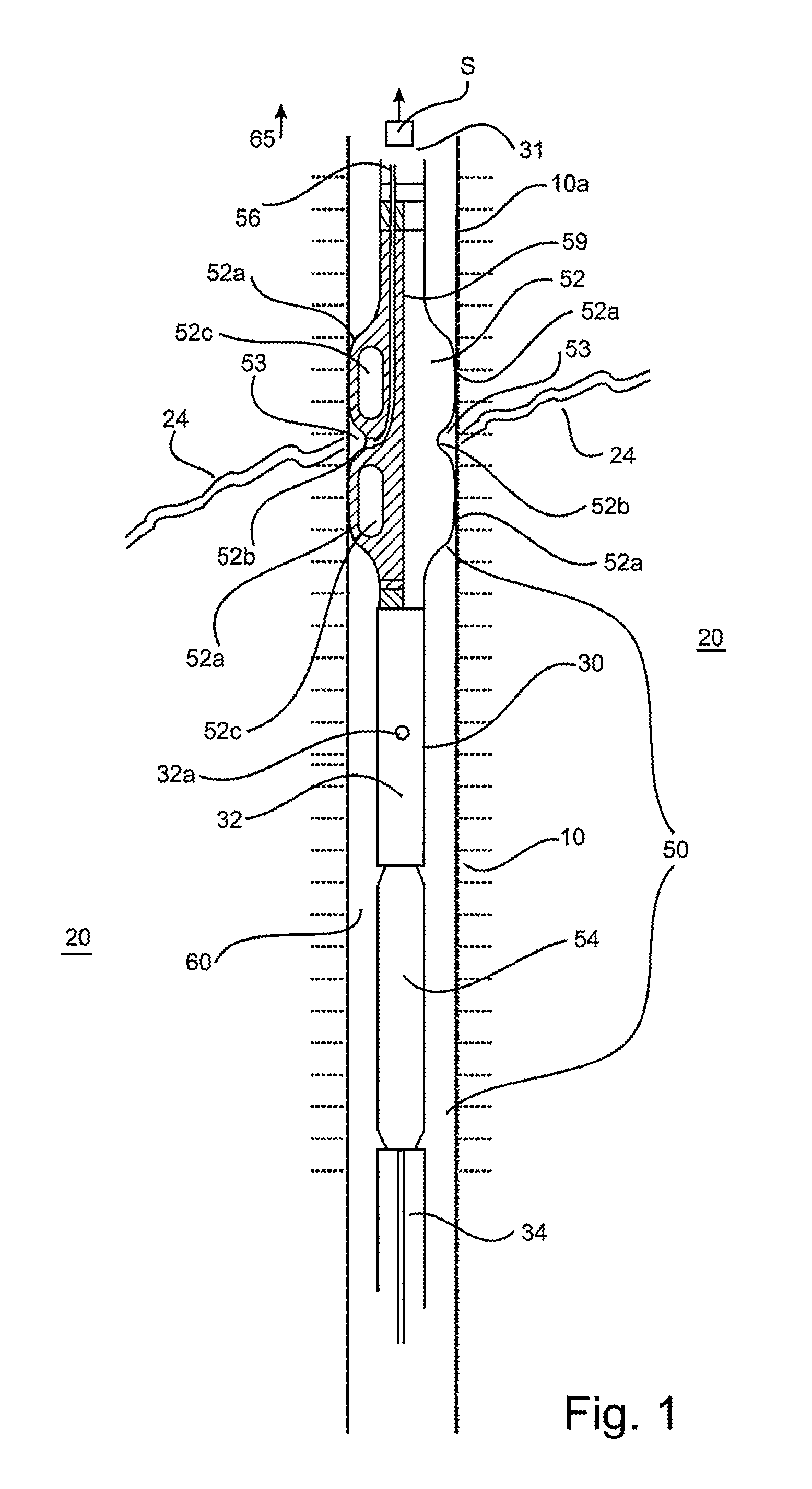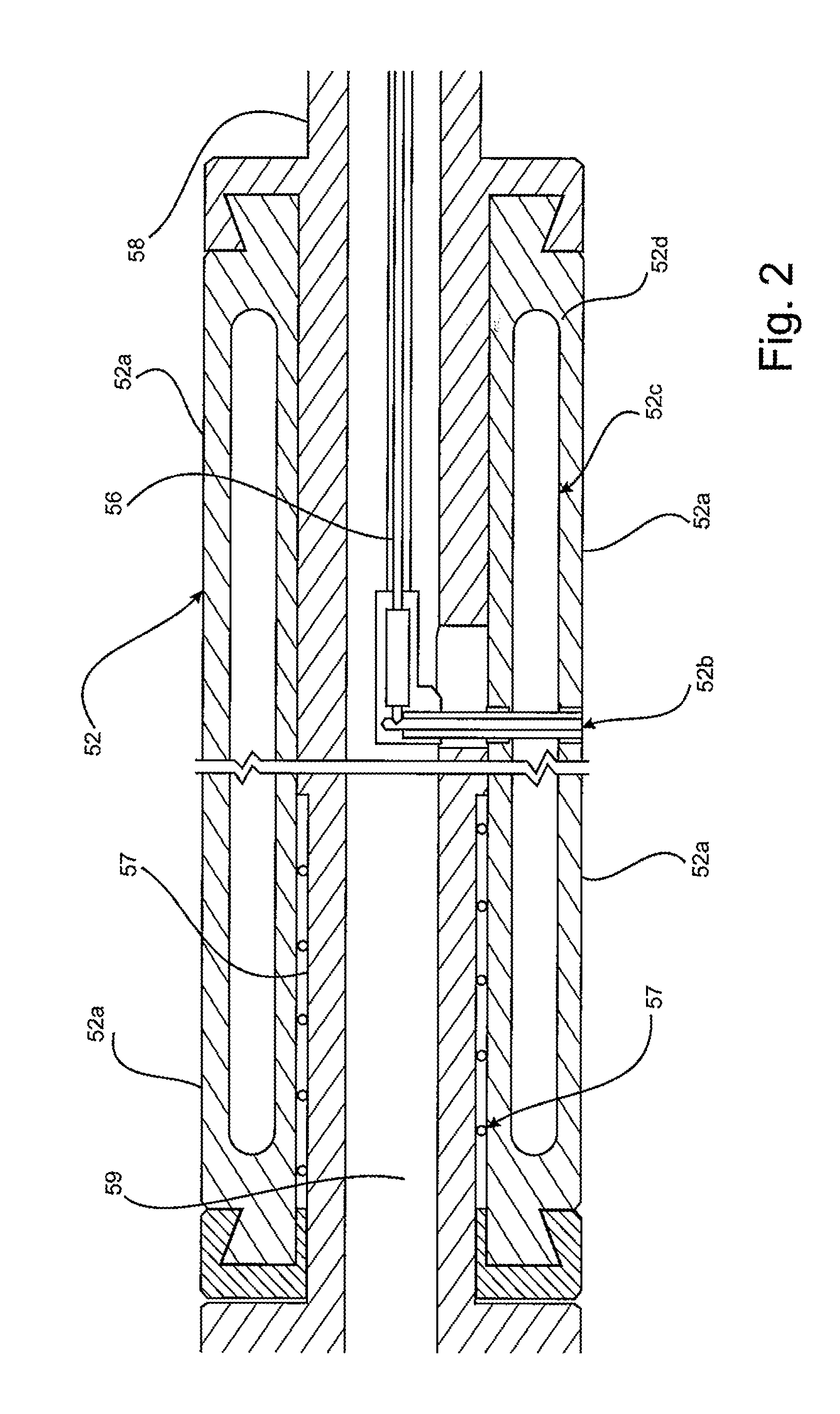Method and tool for evaluating a geological formation
a geological formation and method technology, applied in the field of methods and tools for evaluating geological formations, can solve the problems of high complexity of reserve geology, easy fracture, and high pressure of rocks, and achieve the effects of accurate evaluation, rapid sampling, and less cos
- Summary
- Abstract
- Description
- Claims
- Application Information
AI Technical Summary
Benefits of technology
Problems solved by technology
Method used
Image
Examples
Embodiment Construction
[0050]Referring to FIGS. 1, 2 and 4, during exploration for hydrocarbon resources within a complex carbonate geological formation 20, a borehole 10 is drilled from the surface 65 into the formation 20 and a wire-line pump through formation evaluation device or tool 30—of tubular string form comprising a number of inter-connected subs 31, 32, 34, 52, 54—is inserted, through lowering, into the borehole 10 for evaluating the formation. Wireline(s) (not shown) convey the tool 30 within borehole 10. Wireline(s) also convey electrical signals (data), representative of formation properties, to a facility at the surface 65. The electrical signals may also be sent to and from a control unit (not shown) for formation evaluation tool 30. Such control unit may be geographically remote from the borehole 10. Although borehole 10 is shown extending vertically, this is not intended to be limiting.
[0051]Formation evaluation tool 30, more detail of which is to be provided below, is lowered to a range...
PUM
 Login to View More
Login to View More Abstract
Description
Claims
Application Information
 Login to View More
Login to View More - R&D
- Intellectual Property
- Life Sciences
- Materials
- Tech Scout
- Unparalleled Data Quality
- Higher Quality Content
- 60% Fewer Hallucinations
Browse by: Latest US Patents, China's latest patents, Technical Efficacy Thesaurus, Application Domain, Technology Topic, Popular Technical Reports.
© 2025 PatSnap. All rights reserved.Legal|Privacy policy|Modern Slavery Act Transparency Statement|Sitemap|About US| Contact US: help@patsnap.com



